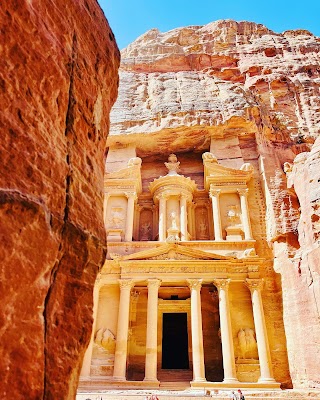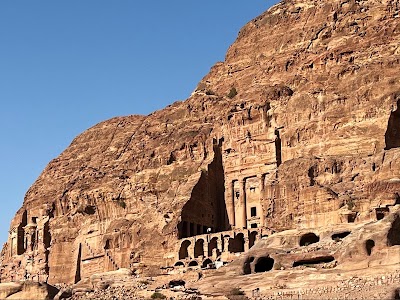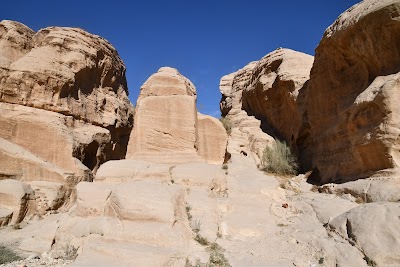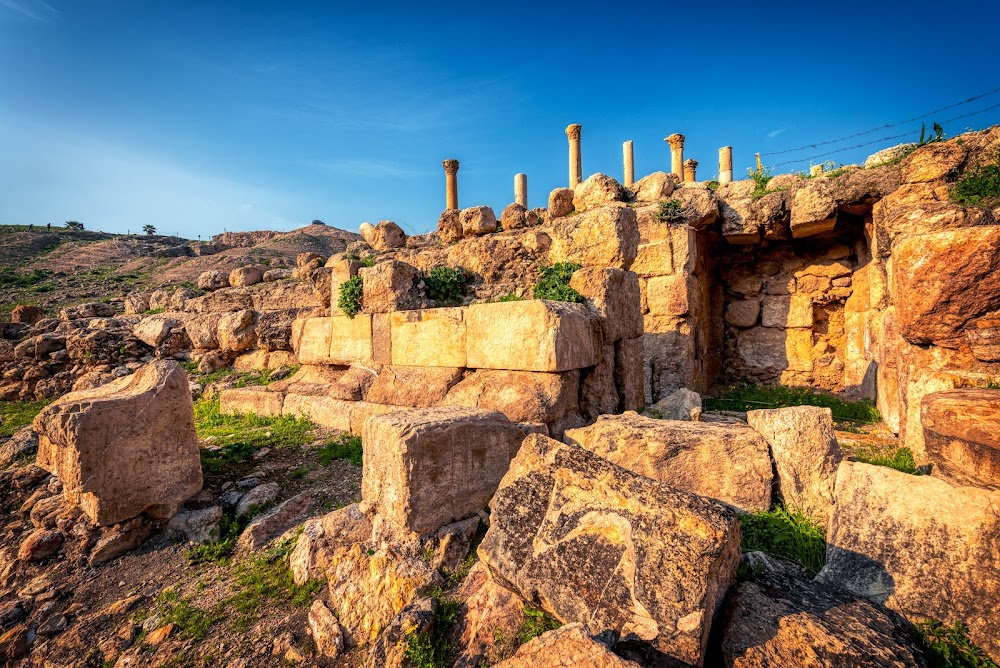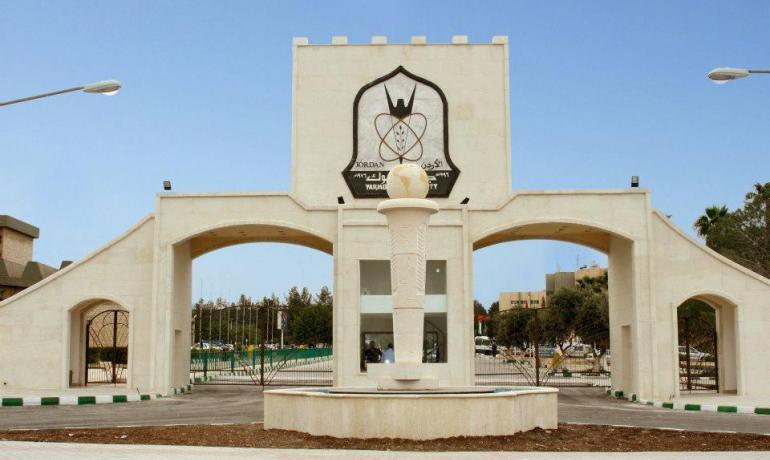Al-Khazneh (الخزنة)
Overview
Al-Khazneh, often referred to as "The Treasury," stands as one of Jordan's most iconic and awe-inspiring landmarks, drawing tourists from around the globe. Nestled in the historical city of Petra, this ancient marvel is frequently confused with Irbid due to Jordan’s rich tapestry of historical sites. Recognized as a UNESCO World Heritage Site, Petra is located amid the craggy mountains and desert canyons of southern Jordan. Al-Khazneh is a testament to the architectural genius and artistic vision of the Nabateans, who carved this majestic structure directly into the sandstone cliffs over 2,000 years ago.
As visitors approach Al-Khazneh, they traverse the narrow and winding Siq, a natural gorge that extends approximately 1.2 kilometers. The anticipation builds as the path narrows, culminating in a breathtaking reveal as the gorge dramatically opens to showcase the grand façade of Al-Khazneh. Standing around 40 meters high and 25 meters wide, this intricately carved structure boasts Corinthian columns, statues, and ornate details that reflect a captivating blend of Hellenistic and Nabatean architectural influences.
The history of Al-Khazneh is as fascinating as its appearance. Petra served as the thriving capital of the Nabatean Kingdom, a bustling hub of trade and culture around the first century AD. Situated along the caravan route for spices, silk, and other precious goods, Petra linked the major civilizations of the ancient world. Al-Khazneh is believed to have been commissioned by King Aretas IV as a mausoleum and crypt, although its exact original purpose remains a subject of historical debate. Some theories suggest it may have also served as a treasury or temple, highlighting its importance in Nabatean religious and cultural life.
An intriguing aspect of Al-Khazneh is its misleading name, "The Treasury." This moniker originated from a local Bedouin tale claiming that treasures lay hidden within the urn atop the structure. In an attempt to uncover these mythical riches, Bedouins even shot at the urn, leaving bullet marks that are still visible today. However, no treasure was ever found inside; instead, archaeologists discovered that the interior chambers were intricately designed, likely serving funerary purposes.
Inside Al-Khazneh, the grandeur continues, albeit in a more modest form compared to its enormous façade. The main chamber is a large square room cut from the rock, devoid of significant internal decoration, presenting a striking contrast to the ornate exterior. Smaller chambers branch off from the main hall, possibly used for preservation rituals or as burial chambers, offering a glimpse into the rituals of the Nabateans.
Al-Khazneh’s remarkable preservation and the secrets it holds provide invaluable insights into the Nabatean civilization. Renowned for their ingenuity in water conservation, the Nabateans engineered sophisticated water collection and distribution systems essential for their survival in the arid region. The architectural brilliance exhibited by Al-Khazneh and other Petra structures is a testament to their advanced hydraulic and stone-carving techniques.
Visitors often enhance their experience by engaging local guides who share captivating tales of Nabatean history, legends, and the strategic significance of Petra in ancient commerce. The best time to visit Al-Khazneh is early morning or late afternoon when the soft light accentuates the rose-red hues of the sandstone, earning Petra its nickname, "The Rose City."
Beyond its historical and architectural significance, Al-Khazneh has gained global cultural prominence, appearing in numerous films, including the iconic "Indiana Jones and the Last Crusade," further solidifying its mythic status among modern audiences.
For anyone traveling to Jordan, a visit to Al-Khazneh offers not just a glimpse into ancient history but an unforgettable experience of human creativity and achievement. Standing before this majestic façade, it’s easy to be transported back to an era of great kings, trade routes, and a civilization that carved an indelible mark into the cliffs of time.
In summary, Al-Khazneh is much more than just a relic of the past; it is a living chapter of human ingenuity, cultural exchange, and artistic excellence, waiting to enchant its next visitor with its timeless mystique and grandeur.


